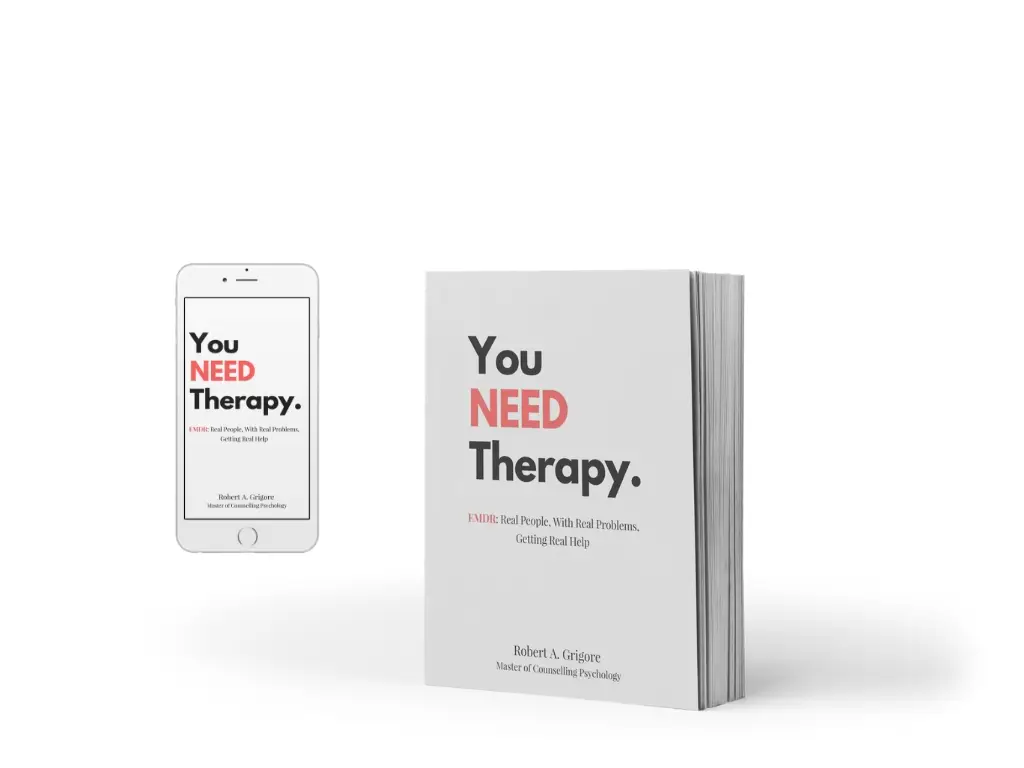What is the process of EMDR therapy? If you’ve heard about EMDR (Eye Movement Desensitization and Reprocessing) and are considering it, you’re likely curious about how it actually works. EMDR is an evidence-based method used to treat trauma, anxiety, and emotional distress by helping the brain reprocess painful memories.
Our team at Grigore Counselling specializes in offering EMDR therapy that is client-centred, trauma-informed, and effective. If you’re exploring EMDR therapy in Surrey or considering sessions with us, understanding the step-by-step process can help ease anxiety about starting.
What Is the Process of EMDR Therapy?
So, what is the process of EMDR therapy in practical terms?
EMDR therapy follows a structured eight-phase approach designed to help you identify distressing memories and reprocess them. The brain naturally works to heal emotional wounds. But when trauma interferes, the brain can’t complete that healing on its own. EMDR jumpstarts that process using bilateral stimulation—like side-to-side eye movements, tapping, or sound.
The process unfolds in phases. It’s methodical, grounded in research, and tailored to each individual.
Phase 1: History and Treatment Planning
The first step in what is the process of EMDR therapy is an in-depth intake. Your therapist will gather your personal history, discuss current symptoms, and create a treatment plan. Together, you’ll identify specific targets—these could be traumatic memories, negative beliefs, or disturbing experiences that still affect you.
Our team of EMDR therapists makes sure the plan aligns with your goals and readiness. EMDR isn’t rushed. We build the foundation carefully to keep you safe throughout the journey.
Phase 2: Preparation
Preparation is key. In this phase of what is the process of EMDR therapy, your therapist teaches you grounding and coping skills. These include mindfulness, guided imagery, or safe-place visualizations. This ensures you can stay regulated during sessions, especially when processing difficult material.
You don’t start reprocessing until you’re equipped to handle the emotional responses that might surface.
Phase 3: Assessment
Now it’s time to activate the target memory. In the assessment phase of what is the process of EMDR therapy, you focus on one specific memory and identify the negative belief attached to it—for example, “I’m not safe” or “I’m not good enough.” You’ll also identify a positive belief you’d rather hold.
The therapist will ask you to rate the level of distress and how true the positive belief feels. This sets a baseline to track progress.
Phase 4: Desensitization
This is where reprocessing begins. Desensitization is the core phase in what is the process of EMDR therapy. While focusing on the memory, you engage in bilateral stimulation—usually through eye movements. Your brain starts to process the memory, often shifting how you feel about it.
The memory may become less intense or shift entirely. Some people report that the memory feels more distant or neutral. This continues until your distress level lowers significantly.
Phase 5: Installation
Next, you “install” the positive belief. In this phase of what is the process of EMDR therapy, you focus on the preferred belief (“I am safe” or “I am strong”) while doing more bilateral stimulation. The goal is to strengthen this belief until it feels completely true.
This phase is vital for helping you move forward with new emotional understanding.
Phase 6: Body Scan
After desensitizing the memory and installing the new belief, your therapist will guide you through a body scan. This means checking for residual physical tension or discomfort. Trauma often lives in the body, so this step ensures full resolution.
If there’s lingering tension, it may signal more processing is needed. If the body feels calm, it confirms integration.
Phase 7: Closure
Closure is part of every EMDR session. In this step of what is the process of EMDR therapy, your therapist helps you return to a calm state. You’ll use the grounding tools learned in the preparation phase to close the session safely.
Phase 8: Reevaluation
At the beginning of your next session, your therapist will reevaluate the target memory. This is the final step in what is the process of EMDR therapy. They’ll check how you feel about the memory now and whether further work is needed.
Reevaluation also helps determine the next target, ensuring that therapy stays focused and effective.
The Research Behind EMDR
Still wondering, what is the process of EMDR therapy, and does it really work? EMDR is backed by extensive research, including studies published in the Journal of EMDR Practice and Research. You can explore more evidence here.
The therapy is endorsed by organizations such as the American Psychological Association, World Health Organization, and Veterans Affairs Canada. It brings relief faster for many people compared to traditional talk therapy.
FAQs About EMDR
What is EMDR therapy explained simply?
It’s a therapy that helps your brain reprocess traumatic memories. You focus on a painful memory while doing eye movements, which helps the brain heal and reduce emotional distress.
Why is there a controversy with EMDR?
Some critics question how eye movements help the brain, though many studies show EMDR is effective. The main controversy is about the exact mechanism—not the results, which are well-documented.
What are the 8 steps of EMDR?
The eight steps are: history taking, preparation, assessment, desensitization, installation, body scan, closure, and reevaluation. Each step supports healing from trauma in a structured way.
Who is EMDR not suitable for?
EMDR may not be ideal if you’re in active crisis, dealing with unmanaged substance use, or lack emotional stability. Your therapist will assess your readiness before beginning.











